Q.1.
Reptiles are classified on the basis of
-
0%
Vacuities
-
0%
Brain
-
0%
Scales
-
0%
None of the above
Q.2.
When tail is cylindrical and ventral scales do not extend the entire width of the belly, the snake is
-
0%
Non-venomous
-
0%
Definitely venomous
-
0%
Deadly venomous
-
0%
Either venomous or non-venomous
Q.3.
Large size scales fully extended from side to side on belly are unique to
-
0%
Non-venomous snakes
-
0%
Venomous snakes
-
0%
Viviparous snakes
-
0%
Oviparous snakes
Q.4.
Which of the following is the land tortoise?
-
0%
Trionyx
-
0%
Testudo
-
0%
Chelone
-
0%
Kachuga
Q.5.
Which of the following is not true of Sphenodon?
-
0%
It is an ancient type of reptile close to Chelonians.
-
0%
An interesting feature is presence of the third eye in middle of its forehead.
-
0%
It is a rare animal fast approaching extinction. It survives today in New Zealand.
-
0%
It has been called as living fossil.
Q.6.
Which of the following reptile is warm blooded?
-
0%
Chelone
-
0%
Heloderma
-
0%
Crocodilus
-
0%
None of the above
Q.7.
Vertebrae centra of reptiles are
-
0%
Homocoelous
-
0%
Heterocoelous
-
0%
Amphicoelous
-
0%
Procoelous
Q.8.
The only living member of the order Rhynchocephalia is
-
0%
Sphenodon
-
0%
Hemidactylus
-
0%
Draco
-
0%
Iguana
Q.9.
The only living marine lizard is
-
0%
Amblyrhynchus
-
0%
Heloderma
-
0%
Ophisaurus
-
0%
Eryx
Q.10.
The only poisonous lizard of the world is
-
0%
Hemidactylus
-
0%
Phrynosoma
-
0%
Heloderma
-
0%
Uromastix
Q.11.
Is this species endemic?
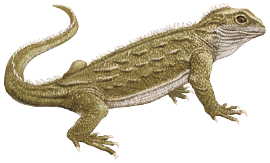

-
0%
Yes
-
0%
No
-
0%
May be
-
0%
Insufficient data
Q.12.
Give zoological and common names of this species.
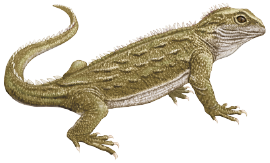

-
0%
Sphenodon is also known as tuatara lizard
-
0%
Monitor lizard is also known as Varanus
-
0%
Both A and B
-
0%
None of the above
Q.13.
Snake's venom is
-
0%
Alkaline in reaction
-
0%
Acidic in reaction
-
0%
Alkaline and rich fatty acids
-
0%
Acidic and rich fatty acids
Q.14.
Match the columns.
| Common Name | Generic Name |
| A. Tortoise | I. Testudo |
| B. Turtle | II. Chelonii |
| C. Soft-shelled Turtle | III. Trionyx |
| D. Tuatara | IV. Sphenodon |
-
0%
A- I, B- II, C- III, D- IV
-
0%
A- I, B- III, C- II, D- IV
-
0%
A- III, B- I, C- IV, D- II
-
0%
A- III, B- II, C- I, D- IV
Q.15.
The characteristic feature of venomous sea snakes is
-
0%
Laterally compressed tail
-
0%
Round tail
-
0%
Bifid tongue
-
0%
Paired nostrils
Q.16.
Which of the following animal is unique to the country, where the members of Ophidia are absent?
-
0%
Hatteria
-
0%
Lepidosiren
-
0%
Latimeria
-
0%
Trylatotriton
Q.17.
Zoological name of common Indian krait is
-
0%
Bungarus caeruleus
-
0%
Ophiophagus
-
0%
Vipera Russelli
-
0%
Naja naja
Q.18.
Jacobson's organ can be traced in
-
0%
Pisces
-
0%
Aves
-
0%
Mammalia
-
0%
Reptilia
Q.19.
An animal which has both exoskeletal and endoskeletal structures is:
-
0%
Fresh water nussel
-
0%
Tortoise
-
0%
Frog
-
0%
Jelly fish
Q.20.
Diapsid skull is found in
-
0%
Chelonia.
-
0%
Crocodilia.
-
0%
Squamata.
-
0%
Rhynchocephalia.
Q.21.
Whale is placed in mammals and not in pisces because it:
-
0%
Is aquatic in habit.
-
0%
Does not have fins.
-
0%
Respires through gills.
-
0%
Possess mammary glands.
Q.22.
Match the columns.
| Common Name | Generic Name |
| A. Flying lizard | I. Draco |
| B. Gila monster | II. Ophiosaurus |
| C. Glass Snake | III. Typhlops |
| D. Blind Snake | IV. Heloderma |
-
0%
A- I, B- II, C- III, D- IV
-
0%
A- I, B- IV, C- III, D- II
-
0%
A- I, B- IV, C- II, D- III
-
0%
A- I, B- III, C- II, D- IV
Q.23.
Match the features with the given organisms.
Alligators are found in the river of North America and China. They have broader head than crocodiles.
Gavialis or the Gharial is common in rivers of India (Ganges), Burma and Malaysia.
Crocodiles are found in river, pond, and marshes in India, Burma, Africa, and America.
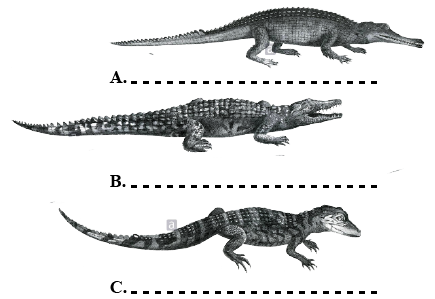
Alligators are found in the river of North America and China. They have broader head than crocodiles.
Gavialis or the Gharial is common in rivers of India (Ganges), Burma and Malaysia.
Crocodiles are found in river, pond, and marshes in India, Burma, Africa, and America.

-
0%
1- C, 2- A, 3- B
-
0%
1- A, 2- C, 3- B
-
0%
1- B, 2- A, 3- C
-
0%
1- C, 2- B, 3- A
Q.24.
Which one of the following helps in respiration of aquatic mammals?
-
0%
Organ of Corti
-
0%
Bursa fabricii
-
0%
Gill lamellae
-
0%
Retia mirabilia
Q.25.
These are certain very important reptiles. Arrows can give you hints. Match the given features with them.
Largest fangs in the world of Gabbon viper.
2.The flying lizard, Draco.
Anaconda, the largest viviparous snake.
Varanus, the largest lizard called as Komodo dragon.
Phrynosoma, the spiny toad or horn lizard.
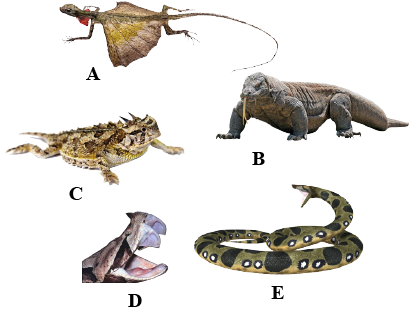
Largest fangs in the world of Gabbon viper.
2.The flying lizard, Draco.
Anaconda, the largest viviparous snake.
Varanus, the largest lizard called as Komodo dragon.
Phrynosoma, the spiny toad or horn lizard.

-
0%
1- D, 2- A, 3- E, 4- C, 5- B
-
0%
1- D, 2- C, 3- E, 4- B, 5- A
-
0%
1- E, 2- A, 3- D, 4- B, 5- C
-
0%
1- D, 2- A, 3- E, 4- B, 5- C
Q.26.
A lizard-like member of Reptilia is sitting on a tree with its tail coiled around a ting. This animal could be a:
-
0%
House gecko (Hemidactylus) showing sexual dimorphism
-
0%
Monitor lizard (Varanus) showing mimicry
-
0%
Garden lizard (Calotes) showing camouflague
-
0%
Chameleon (Chamaeleonidae) showing protective colomotion
Q.27.
Which is not a mammalian gland?
-
0%
Prostate gland
-
0%
Pineal gland
-
0%
Conglobate gland
-
0%
Cowper's gland
Q.28.
Hippopotamus is
I - Amphibious
II - Herbivorous
III - Carnivorous
IV - Non-ruminant
Of these statements the correct one.
I - Amphibious
II - Herbivorous
III - Carnivorous
IV - Non-ruminant
Of these statements the correct one.
-
0%
I and II
-
0%
II and IV
-
0%
III and IV
-
0%
I, II and IV
Q.29.
Aquatic rodents are
-
0%
Walrus
-
0%
Seal
-
0%
Beavers
-
0%
Dolphins
Q.30.
Character not shared by monotremes and reptiles is
-
0%
Body covered by hair and four chambered heart
-
0%
A median T-shaped interclavicle present
-
0%
Presence of cloaca
-
0%
Thoracic ribs are single headed
Q.31.
Which one of the following mammals has mammary glands but no teats?
-
0%
Ornithorhynchus
-
0%
Macropus
-
0%
Lemur
-
0%
Apes
Q.32.
In which of the following is diastema found?
-
0%
Dog
-
0%
Cetaceans
-
0%
Rabbit
-
0%
Cat
Q.33.
Hairless mammals are
-
0%
Rodents
-
0%
Chiropterans
-
0%
Primates
-
0%
Cetaceans
Q.34.
Which one of the following does not belong to the order Perissodactyla?
-
0%
Horse
-
0%
Rhinoceros
-
0%
Tapirus
-
0%
Deer
Q.35.
True flying lemurs belong to
-
0%
Insectivora
-
0%
Carnivora
-
0%
Edentata
-
0%
None of the above
Q.36.
In elephants, testes are
-
0%
In abdobmen
-
0%
In scrotal sacs
-
0%
Absent
-
0%
In iguinal canal
Q.37.
The scientific name of Indian ass is
-
0%
Equss coballus
-
0%
Equus hominis
-
0%
Hystrix leucara
-
0%
Equus equus
Q.38.
Which one of the following is a toothless mammal giving birth to 4 young ones at a time and of same sex?
-
0%
Pangolin
-
0%
Echidna
-
0%
Sea cow
-
0%
Ornothorhynchus
Q.39.
These are groups of few mammals. Match them with groups/features.
Metatherians, native of Australia
Rodents, the fossorial
Flying foxes, member of Chiroptera
Proboscidea, the largest land animal
Primates with estrous or menstrual cycle
Legormorphs with two pairs of incisors with open root canals
Prototherians, sharing features with primitive vertebrates.
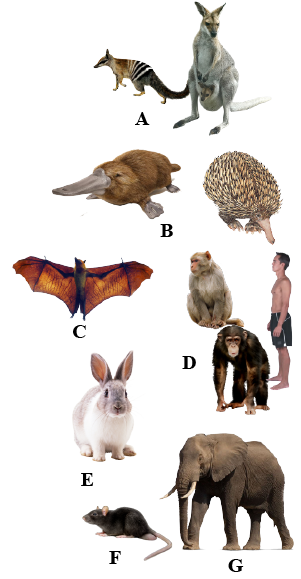
Metatherians, native of Australia
Rodents, the fossorial
Flying foxes, member of Chiroptera
Proboscidea, the largest land animal
Primates with estrous or menstrual cycle
Legormorphs with two pairs of incisors with open root canals
Prototherians, sharing features with primitive vertebrates.

-
0%
1- A, 2- F, 3- C, 4- G, 5- D, 6- E, 7- B
-
0%
1- B, 2- G, 3- D, 4- A, 5- F, 6- E, 7- C
-
0%
1- B, 2- F, 3- C, 4- G, 5- D, 6- B, 7- E
-
0%
1- B, 2- F, 3- G, 4- A, 5- D, 6- E, 7- C
Q.40.
Ancestors of mammals belongs to
-
0%
Ornithischia
-
0%
Therapsida
-
0%
Both A and B
-
0%
Chelonia
-
0%
None of the above
Q.41.
Mark the correct match from the following.
| A. Killer whale | I. Balaenoptera |
| B. Blue whale | II. Caparea |
| C. Hump back whale | III. Megaptera |
| D. Pigmy whale | IV. Orcinus |
-
0%
A- I, B- III, C- IV, D- II
-
0%
A- IV, B- I, C- III, D- II
-
0%
A- II, B- III, C- IV, D- I
-
0%
A- I, B- II, C- III, D- IV
Q.42.
Which one of the following belongs to the phylum Mammalia?
-
0%
Hydrophis
-
0%
Rhacophorus
-
0%
Echeneis
-
0%
Didelphis
Q.43.
Which of the following is commonly known as hedgehog?
-
0%
Erinaceous
-
0%
Talpa
-
0%
Pteropus
-
0%
Didelphys
Q.44.
The largest whale, Balaenoptera is found in
-
0%
Indian Ocean
-
0%
Antarctic Ocean
-
0%
Atlantic Ocean
-
0%
Pacific Ocean
Q.45.
A distinct cloaca is present in
-
0%
Marsupials
-
0%
Monotremes
-
0%
Primates
-
0%
Rodents
Q.46.
Which of the following is a mammal?
-
0%
Platypus
-
0%
Whale
-
0%
Kangaroo
-
0%
All of the above
Q.47.
Marine carnivores, sea-lion, walrus, seal belongs to the order of
-
0%
Pinnipedia
-
0%
Tubulidentata
-
0%
Proboscidea
-
0%
Hyracoidea
Q.48.
Which one is a placental mammal?
-
0%
Protoglossus
-
0%
Oryctolagus
-
0%
Tachyglossus
-
0%
Sacchaglossus
Q.49.
Baleen is traced in which of the following?
-
0%
Sus
-
0%
Whales
-
0%
Ovis
-
0%
Equus
Q.50.
Pick the correct match from the following.
| Cow | A. Perissodactyla |
| Horse | B. Proboscidea |
| Whale | C. Artiodactyla |
| Elephant | D. Cetacea |
-
0%
A- 2, B- 4, C- 1, D- 3
-
0%
A- 1, B- 2, C- 4, D- 3
-
0%
A- 4, B- 2, C- 1, D- 3
-
0%
A- 2, B- 3, C- 1, D- 4